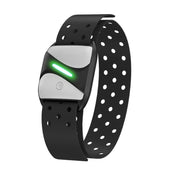As we all know, it is particularly important to choose a good piece of equipment before exercise. If you are worried about how to choose a suitable stationary bike, I suggest you use its adjustable seat, resistance level, flywheel weight, bottle rack and exercise monitoring as important factors. You can also check the following video for reference.
Of course, if you don't know enough about stationary exercise bikes, you can learn about their types first.
Know the different types
Stationary cycles are generally divided into three types:
- Upright bicycles: upright bicycles usually require the rider to move in a more upright posture because of its higher upright handlebars and wider upholstered seats. Coupled with their more vertical frames, you can maintain a fixed sitting position while riding the bike.
- Recumbent Bicycles: recumbent bicycles usually have back cushions, allowing the rider to sit in a reclining position, with a supporting or cushioned backrest. If you've ever hurt your back or spine, this one is a good choice. It can be safely used as exercise or rehabilitation equipment because the pressure on the back will be minimized, making riding more comfortable.
- Spin bikes: when you are riding a spin bike, you can choose different sports positions. The handlebars of the exercise bike will be lower, which means that your body will lean forward more. One of the advantages you can get from spinning a bike is that you can ride it sitting or standing up to better experience the feeling of riding outdoors.
How to set up your bike
When you have determined the right exercise bike, the next step is to decide how to use your workout bike in the best way.
Pedal straps
The pedals of most fixed bicycles have adjustable straps to ensure that you are safe while riding. To use your exercise bike correctly, you should fasten your feet to the pedal and the belt tightens the soles of your feet. Remember to pay attention to the tension of the belt, make sure there is a gap between the top of the belt and your shoes, do not tie too loose or too tight. When your feet are ready, you can push and pull the pedal smoothly and effectively.
Seat Height
Keep the seat height in the best position to produce an efficient and powerful pedal stroke. To adjust the seat height to fit you, stand directly next to your bike seat and move the seat to about the same height as your hip. When your forelegs are fully extended, your knees should have a slight bend, about 5 to 10 degrees. You can tread comfortably without pointing to a full stretch with your toes. In addition, if your hips sway from side to side, the seat is too high and needs to be adjusted.
Most recumbent bicycles are different from ordinary fitness bikes in that they have the function of adjusting the forward and backward seats. Use the seat adjustment lever to lock the seat back in place. During each pedal trip, when your feet are furthest from your body, your knees should bend slightly.
Workout monitors
Exercise monitors are also essential for our effective exercise. When riding a bike, we can monitor our speed, distance, calories burned, heart rate and difficulty level according to the monitor. Through these data, we can better understand our exercise ability and results, so as to make different plans to help us better achieve our fitness goals.

Adjusting the Handlebars
In general, most upright bicycles and recumbent bicycles have fixed handlebars, which mean you may not be able to adjust them. If you choose an indoor exercise bicycle, do not adjust the handlebar too high, too low, too close or too far, as you may feel pain in your neck, shoulders, back and hands. Just stretch your arms comfortably onto the handlebars as long as your shoulders and bend your elbows comfortably while riding.
Body positions
When we have a certain understanding of the use of equipment, we should not ignore the importance of body posture. When cycling, we must keep our back upright and keep our head aligned with our neck and spine. The head should be aligned with the neck and spine to avoid blood and oxygen flow to the head due to neck strain. While holding the handlebar, bend your elbows slightly and close to your body. The position of the feet is also critical. Keep your feet flat and use the whole soles of your feet to exert force, so as to ensure the stability of riding. Finally, please don't forget to warm up before exercise. An appropriate warm-up can better help us reduce the risk of injury.
I hope after reading this article, it can bring you useful help in your cycling exercise journey!


